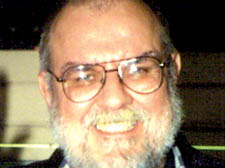|
|
 |
| |

Anthony Hardy |
‘How to handle killing’ advice
Health trust boss under fire over column
A LEADING mental health trust director in the department challenged over the care received by schizophrenic serial killer Anthony Hardy has written a magazine column advising fellow professionals on how to “handle a killing”.
David Lee, Camden and Islington’s Mental Health Trust’s head of strategic development, did not name the Hardy case directly, but makes veiled references to the 2002 murders in a Health Service Journal column, published in June.
He said handling such a case could be “career defining”.
He wrote: “Have your lines ready. If you can offer reassurances that you have conducted a good investigation, that you are serious about learning lessons, you have a chance of convincing reasonable people that your Trust is not all bad.”
His comments come three years after an independent inquiry cleared the Trust of any mistakes when they let Hardy leave St Luke’s Mental Hospital.
A month after being released, he murdered prostitutes Liz Valad, 29, and Brigitte MacClennan, 35, in his Camden Town council flat before dismembering their bodies. He had already escaped from a failed police investigation earlier in 2002 when the naked body of another prostitute, Sally White, 38, was found locked in his back room.
Titled “David Lee on handling a killing”, Mr Lee’s column added: “The no-blame principle is vital, but it should not be mistaken for a no-hard-questions principle.”
Hardy, 59, is now serving a life sentence. Known as “the Camden Ripper”, he was caught after a tramp found body parts in bin bags near his home.
One user of the HSJ’s website has criticised the tone of the article.
When asked whether he felt any criticism of his column was justified, Mr Lee said yesterday: “If you are referring to the anonymous post which claims that I am ‘cynical, unfeeling and heartless’ my view is that anonymous abusive comments are not worthy of a response.”
Mr Lee, who is not paid for the columns, added: “In the context of internal inquiries, the point is that a no-blame or ‘fair blame’ or ‘just blame’ approach enables learning for the future.” |
 |
|
|
 |
| |
| |
| |
|
 |
|